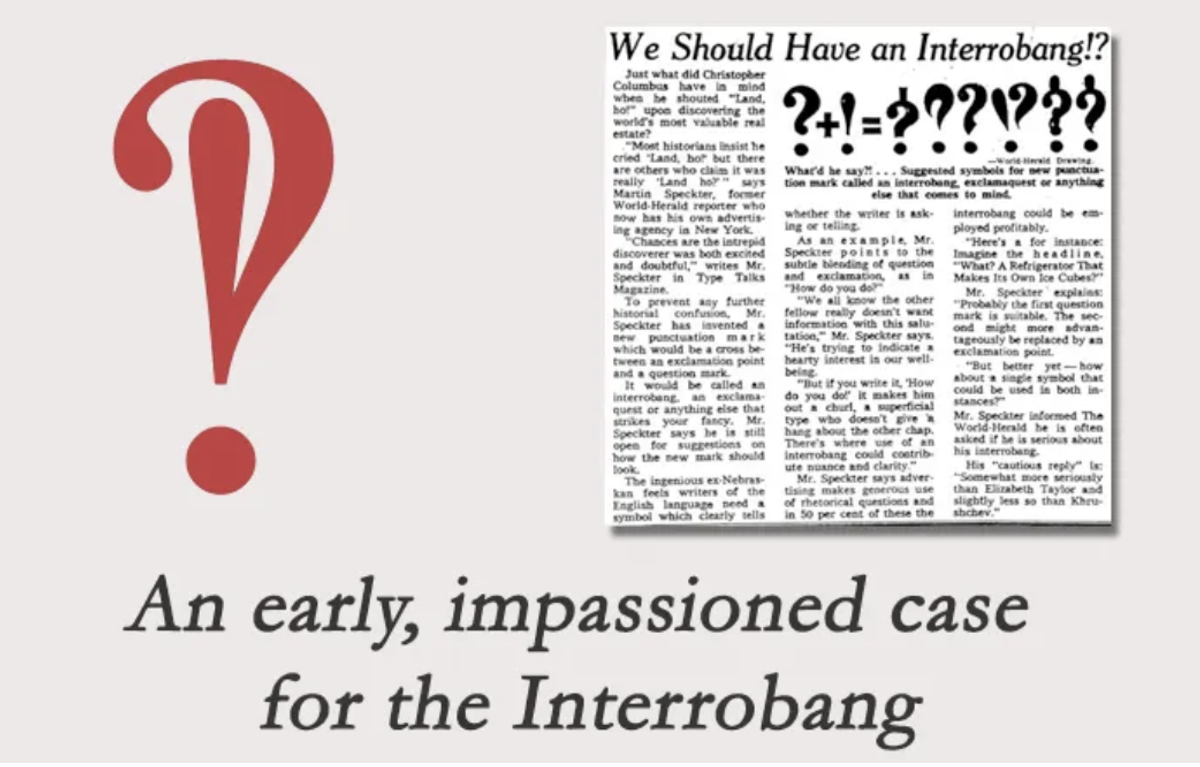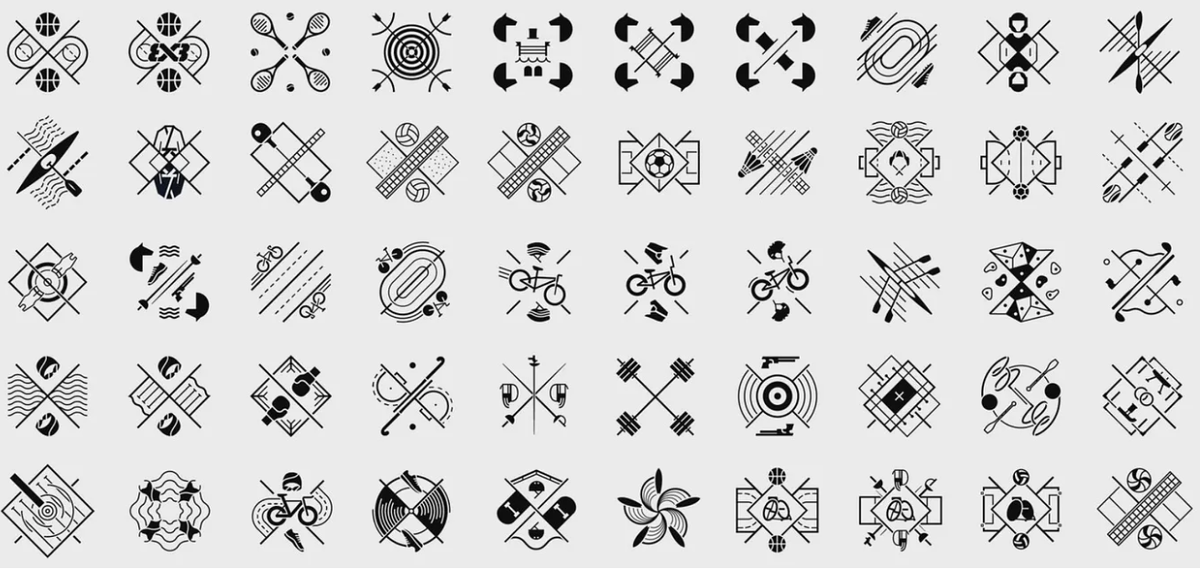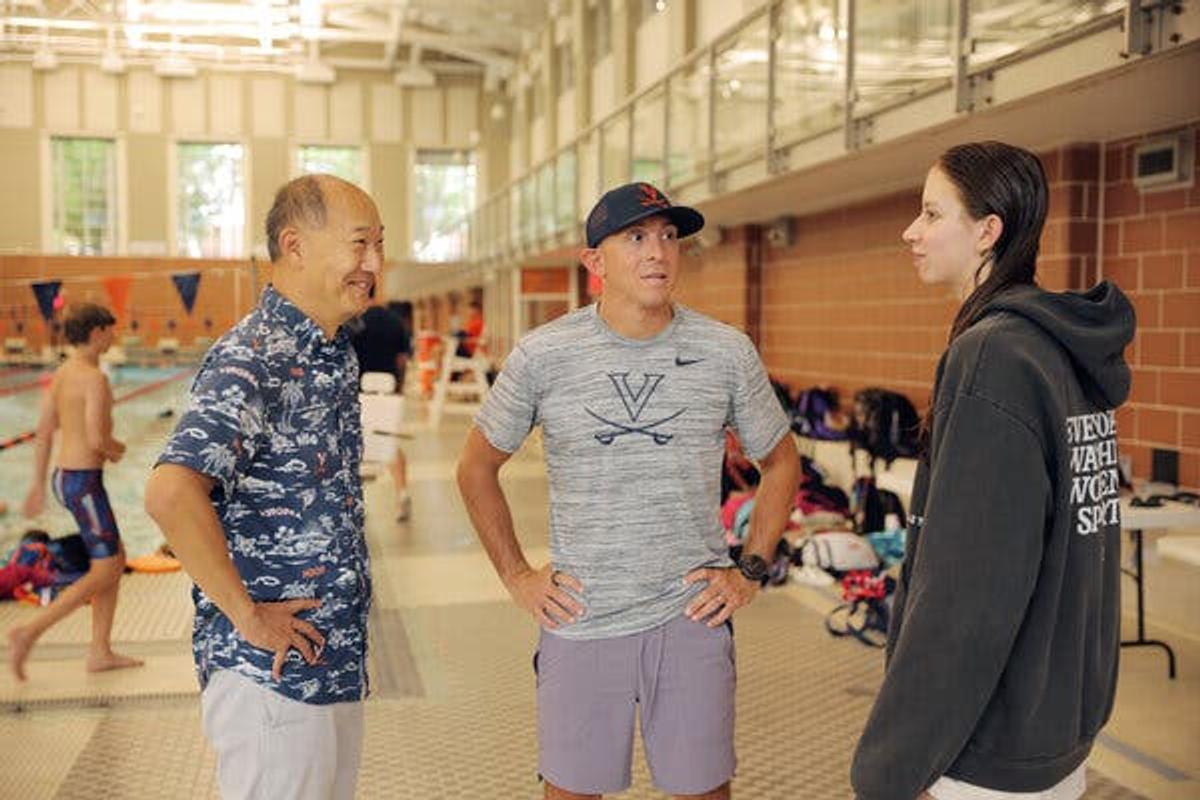Teaching & Learning Page:

Web Pages:
https://complimentme.replit.app/
https://thekidshouldseethis.com/
https://www.narratedguide.com/
https://explore.dawn-chorus.org/
Dawn Chorus is a sound project that collects and maps bird song recordings from all over the world.
75 Random Facts - A Series:
16. The unicorn is the national animal of Scotland.
It was apparently chosen because of its connection with dominance, chivalry, purity, and innocence in Celtic mythology.
*17. The first aeroplane flew on December 17, 1903.
Wilbur and Orville Wright made four brief flights at Kitty Hawk, North Carolina, with their first powered aircraft, aka the first aeroplane.
18. Venus is the only planet to spin clockwise.
It travels around the sun once every 225 Earth days, but it rotates clockwise once every 243 days.
19. Nutmeg is a hallucinogen.
The spice contains myristicin, a natural compound that has mind-altering effects if ingested in large doses.
20. A 73-year-old bottle of French Burgundy became the most expensive bottle of wine ever sold at auction in 2018, going for US$558,000. The 1945 Romanee-Conti bottle sold at Sotheby for more than 17 times its original estimate of $32,000.
21. Competitive art used to be an Olympic sport.
Between 1912 and 1948, international sporting events awarded medals for music, painting, sculpture, and architecture. It's a shame this didn't catch on; the famous pottery scene in Ghost could have won an Olympic medal as well as an Academy Award for best screenplay.
22. A chef's hat has 100 pleats.
Apparently, it represents the 100 ways you can cook an egg. I wonder if Gordon Ramsay knows that.
23. In 2014, there was a Tinder match in Antarctica.
Two research scientists matched on the global dating app in the most remote part of the world - a man working at the United States Antarctic McMurdo Station and a woman camping a 45-minute helicopter ride away. What are the chances?!
24. The Spanish national anthem has no words.
The 'Marcha Real' is one of only four national anthems in the world (along with those of Bosnia and Herzegovina, Kosovo, and San Marino) without official lyrics.
25. The Japanese word 'kuchi zami shi' means eating when you're not hungry because your mouth is lonely. We do this all the time.
26. The probability of a blue lobster existing is widely touted as one in two million.
Bright blue lobsters are so coloured because of a genetic abnormality that causes them to produce more of a certain protein than others.
27. There’s only one letter that doesn’t appear in any American state name.
There's a Z in Arizona and an X in Texas, but no Q in any of them.
28. Louboutins' iconic red soles were inspired by Andy Warhol.
The famous designer saw a drawing of flowers by the 60s pop artist, which inspired him to add the infamous sole to his designs.
29. Marcel Proust's 'A la recherche du temps perdu' contains an estimated 9,609,000 characters, making it the longest book in the world.
The title translates to"Remembrance of Things Past".
30. Google images was created after Jennifer Lopez wore that infamous dress at the 2000 Grammys.
So many people were searching for her outfit, and the search engine added an image function.
Techie Tips:
The iOS Contact Kiss
The easiest way to share contact information between two people with iPhones is to squarely align the top edge of each person’s phone so they touch. When they “kiss,” each phone makes a weird glow to indicate that the contacts have succeeded in the exchange. You can do a two-way share or just a one-way share with one person. I find it a relief from the awkward task of typing other people’s info precisely.
Get Your Lost Phone Back (Even If Turned Off)
A new feature since iOS 15 somewhat turns your phone into an AirTag and makes it discoverable up to 5 hours after its battery dies. To turn on this feature, enable the Find My Network toggle under the Find My Phone options.
Use Stacks
Right-click on the desktop and choose the option “Use Stacks”. This automatically sorts every file into a single stack that you can access with a single click.
You will find the “Group Stacks by” option right below, and I choose “Kind”. Now, on my
desktop, you find multiple stacks. Once I need to access any file, I can easily find it based on the type of file it is.
Quick copy
To quickly copy a file, hold down the “Option” key and then drag it off or drag it to
another folder to immediately create a copy of it.
Reading Can Change Your Brain Chemistry
When you read, your brain undergoes various neurological processes, which means that reading can literally change your brain chemistry.
The Release of Neurotransmitters:
Science explains that reading can rewire your neural pathways and trigger the release of neurotransmitters such as dopamine, serotonin, and endorphins.
These neurotransmitters are like the messengers of your brain, carrying important signals that can affect everything from your mood to your motivation. The specific trio I mentioned above are associated with feelings of pleasure, relaxation, and happiness.
This study found that people who participated in a bibliotherapy program, which involved reading and discussing fiction novels, experienced significant reductions in symptoms of depression compared to a control group.
When you read something enjoyable or emotionally resonant, you’re literally changing your brain chemistry by giving your brain a powerful boost of feel-good hormones.
Your worries might not disappear entirely, but they sure won’t feel as heavy when you’re lost in a good read.
An Antidote to Stress
Reading has been shown to reduce stress levels by activating the parasympathetic nervous system. This system promotes relaxation and calms the body’s stress response. Stress-related hormones such as cortisol also decline, contributing to a more balanced brain chemistry.
In this study, reading was found to be as effective as yoga and humour in reducing feelings of stress over a 30-minute period, and it can even lower your blood pressure and heart rate.
If you’re wondering what genre of book you should choose, the great news is that it doesn’t matter.
According to Dr. David Lewis, a cognitive neuropsychologist who conducted a study that found reading can reduce stress by as much as 68%:
“Losing yourself in a book is the ultimate relaxation. It really doesn’t matter what book you read. By losing yourself in a thoroughly engrossing book, you can escape from the worries and stresses of the everyday world and spend a while exploring the domain of the author’s imagination.”
Brain Bootcamp
Reading makes you smarter, or, to be more scientific, it enhances your cognitive functions.
Let’s skip the obvious part—that books make you smarter by putting knowledge directly into your hands. When you read, you stimulate multiple areas of your brain, increasing brain connectivity (meaning that different regions of your brain communicate more effectively with each other) over time. These changes in brain activity influence the balance of neurotransmitters and neurochemicals involved in cognitive processes.
As you engage with a book, your brain forms new neural connections and pathways, leading to improved cognitive function. Your brain is literally rewiring itself.
Empathic Resonance
Science backs this up as well — reading fiction has been linked with increased empathy and understanding.
Reading fiction activates brain areas linked to sensory experiences in ways that mimic the neural activities of the experience you’re reading about. When you read, you’re absorbing experiences, perspectives, and emotions. Through books, you can experience the experiences of others, getting you neurologically one step closer to an understanding necessary for empathy.
It’s also been proven that reading evolves our theory of mind, which involves recognising that others have thoughts, feelings, and perspectives that may differ from our own.
Reading truly transforms your brain — and, consequently, your character.
Reading isn’t just a hobby — it’s the key to unlocking new worlds, expanding your mind, and even changing your brain chemistry for the better.
Sketchplanations:
The Olympic Flag, which consists of five interlocking coloured rings, was created by Frenchman Pierre de Coubertin, the founder of the modern Olympic games, and unveiled in 1914.
Coubertin said that the five rings represent the five parts of the world embracing "Olympicism" and competing against each other: Africa, the Americas, Asia, Europe, and Oceania. The interlacing of the rings represents the unity and coming together of athletes from all parts of the world. Coubertin did not associate individual rings with individual continents.
The six colours of blue, dark yellow, black, green, red and white—the field on which the rings are set—"reproduce the colours of every country", and at least one is found on every national flag (I believe that’s still true).
Depending on how you count them, there are 32 sports and over 300 events.
You can learn more than you ever wanted to know about the history of the Olympic Flag in The Story of the Rings by Karl Lennartz (pdf). The Olympic flag and various other Olympic Properties (like the rings, torch and motto) are © IOC.
Point Nemo is the furthest point in the ocean from any land.
Imagine falling overboard and needing to swim to the nearest shore; the longest possible swim would start at Point Nemo. This puzzle, known as the Longest Swim Problem, finds its solution far into the Pacific Ocean at Point Nemo.
The furthest point from land is a point with a maximum equal distance to three points of land. If you moved in any direction from there, you'd be closer to one of the points. The three nearest landmasses to Point Nemo, each about 2,688 km away, are:
- Dulcie Atoll in the Pitcairn Islands
- Moto Nui, a small islet off the coast of the well-known Rapa Nui (Easter Island)
- Maher Island, off the coast of Antarctica
If you’ve ever been somewhere with only the sea in all directions, imagine what it would feel like to begin a 2,688 km swim from there.
The antipode to Point Nemo, the point directly opposite it on Earth's surface, lies somewhere in Kazakhstan.
Croatian survey engineer Hrvoje Lukatela identified and named Point Nemo after Captain Nemo from Jules Verne's classic "Twenty Thousand Leagues Under the Sea." Lukatela faced challenges in determining its exact coordinates, such as choosing the edge of Ducie Atoll's tidal sandbar and Maher Island being beneath the ice for most of the year.
Because of its remoteness, space agencies use the area around Point Nemo as a spacecraft cemetery, sending old satellites and space debris to fall there. The closest people to Point Nemo are likely those in the International Space Station, which passes overhead a mere 400km above.
Point Nemo is also known as the Oceanic Pole of Inaccessibility.
In contrast, the continental point of inaccessibility—the point on land furthest from the ocean—is in northwestern China near Kazakhstan, a remarkable 2,645 km from the nearest shore.
Point Nemo has a lovely spread in Simon Kuestenmacher's book Marvellous Maps.
Article:
Punctuation Marks You Never Knew You Needed:
The glorious exclamation comma (which sadly is not included in Unicode, so I can’t display it here) will free you from the tyranny of having to end a sentence just because you are excited about something. Its brother-in-arms, the question comma, lets you pause to raise a typographical eyebrow without abandoning your thought entirely. It’s ideal for people who are confused but determined.
The because sign (∵) is essentially the underground, hipster cousin of the much more successful, therefore sign (∴), but it doesn’t get much use outside of analytical philosophy.
The interrobang (‽) is a combination of the exclamation point and the question mark, used when you want to be surprised and emphatic all at once.
Olympic Pictograms
Pictograms, at the Olympics, are the symbols used to represent all the different sports at the games. They are used in signage and marketing and act as a primary iconography for a game’s system of design. Conceived for the 1964 Tokyo Olympics, pictograms were originally designed to cross language and literacy barriers. The original pictograms displayed a simplified athlete taking part in a given sport. This is typified by a side pose that combines body shape, outfits, and equipment to display the concept of a sport.
Since then, that pose-based design has been used in all but two Olympic games. When Tokyo hosted the games again in 2020-21, they all but perfected the pose motif with outstandingly polished designs.
After Tokyo 1964, there was one other idea for representing sports graphically. Mexico City’s designers used equipment as the focal point. Instead of sloping hands and strong leg placements, they used rackets, shoes, balls, and oars.
It didn’t catch on. From Montreal to Rio and all in between, pictograms have been poses. Although there have been artistic choices to incorporate writing styles, indigenous art, natural features, or, in the 1970s, metro maps, designers would only adapt the pose concept—until Paris.
The Paris Olympic Pictograms are a dramatic departure from the iconography of the past. These designs were completely stripped down and rebuilt how to symbolize sports. There’s clear inspiration from Mexico 68, only fitting that Paris 2024, like Mexico, comes after a Tokyo Olympics, but this is an entirely unique and fascinating concept. The designers call them “Coat of Arms”, utilising equipment, outfits, and venues to connect to the event. The images are merged visually through a motif of rotational symmetry. This is an innovation that has never been tried before.
Recognisability was somewhat sacrificed for aesthetics. They’re more like " coats of arms,” a visual form about detail, storytelling, and symbolism. Some examples:
And staying with Olympics graphics - a favourite Olympic photo:
Why Some Olympic Swimmers Think About Math in the Pool:
In a sport where gold and silver can be separated by a fraction of a second, many of the world’s top swimmers now scour data for even the smallest edge.
Kate Douglass, a statistics graduate student and the second-fastest swimmer in the world this year in two Olympic swimming events, has always been good with numbers. But before she enrolled at the University of Virginia, she never considered that swimming itself was a math problem that she could try to solve.
That changed when she realized the concepts she was studying in the classroom could be used in her sport. These days, Douglass often gets into the pool while wearing a belt that holds an accelerometer, the same device found in smartphones and fitness watches. As she swims, the sensor measures her movement in three spatial directions 512 times per second.
“That’s helped me to figure out areas of my stroke where I can be more efficient,” said Douglass, 22. So far, so good: On Saturday, she began a busy Olympics schedule by winning a silver medal in the 4x100 freestyle relay.
The swimmers at the Paris Olympics all have the same challenge: to swim as fast as they can by moving through the water in a way that maximizes the force, propelling them toward the finish line while minimizing the force that slows them down. Elite swimmers use familiar tricks to reduce the resistance known as drag, like shaving before big meets and wearing swimsuits made from the same material as Formula 1 racing cars.
Image
Virginia mathematics professor Dr Ken Ono left, with coach Todd DeSorbo and swimmer Kate Douglass at a swim practice in June. Credit...Travis Dove for The New York Times
Though the sport has long relied on a swimmer’s feel in the water or a coach’s eye from the pool deck, Douglass and several of her U.S. Olympic teammates are exploring a new competitive frontier. Under the direction of a Virginia mathematics professor, Dr. Ken Ono, they measure and analyse the forces they create as they swim to optimize how they move through the water. Details as seemingly small as Douglass’s head position in her underwater breaststroke pullout or how her left hand enters the water on her backstroke have been focal points as she has worked to trim the hundredths of a second that make the difference between medals in the sport.
While Douglass is almost certainly the only swimmer in Paris who has co-written a peer-reviewed research paper about this work, similar ideas are catching on elsewhere. As part of a government-funded research program in France aimed at giving the country an edge in its home Olympics, Léon Marchand was tested last summer to learn his “hydrodynamic profile.” Kyle Chalmers, the Australian sprinter who is a three-time Olympian, has partnered with a Sydney-based sports technology lab that created a device to measure the force generated by a swimmer’s hands as they stroke through the water.
“It gives us a mental edge knowing that we have access to this information that you can’t see with the naked eye,” said the two-time Olympian Paige Madden, who recalls researchers using plastic wrap to affix a sensor to her back when she was an undergraduate at Virginia.
Dr. Ono’s methods have advanced over time. About a decade ago, at a conference in Norway, he met a group of mathematicians from the Norwegian School of Sport Sciences who worked with Olympic cross-country skiers, using accelerometers to analyze their movement patterns. This was a lightbulb moment for Dr Ono, a number theory specialist who is also a triathlete and swim dad.
Dr. Ono at a recent swim practice at the University of Virginia. “Swimming is the perfect application of mathematics and physics,” he said.
Dr. Ono, then at Emory University in Atlanta, had a willing test subject in Andrew Wilson, a math student who had walked on to the swim team. They started with accelerometers designed to track sharks and learned as they went, developing a protocol to hone in on the weaknesses in Wilson’s breaststroke. As Wilson shot up in the sport, becoming a Division III national champion and later winning a medley relay gold at the Tokyo Olympics, other members of the U.S. national team began to learn about his and Dr. Ono’s project.
Dr. Ono has since tested about 100 top American swimmers, but he works most closely with the group at Virginia, where he is a regular presence on the pool deck. He also offers an independent study class for STEM students, who learn to analyze the data collected from swimmers like Douglass and Gretchen Walsh, the world-record holder in the 100 butterfly. Thomas Heilman, who, at 17, is the youngest American male swimmer to qualify for the Olympics since Michael Phelps, said one of the reasons he committed to swim at Virginia was to take part in this work regularly.
The 512 snapshots of data captured per second help researchers to create a digital twin for each swimmer, a numerical representation of how the athlete moves through the water. That data pointed to Douglass’s breaststroke pullout as an area where she was losing time. She looked at the video to compare her form with that of Lilly King, a breaststroke specialist, and saw that the forward bend of her head likely created extra drag, slowing her down. Mathematical modelling predicted that with a form adjustment, Douglass, who is now the American record holder in the 200 breaststrokes, could save as much as 0.15 seconds per pullout.
“Swimming is the perfect application of mathematics and physics,” Dr. Ono said. “We were never designed to swim in water. So, swimming quickly in water is a unique and complicated combination of athletic prowess and attention to detail in physics and mechanics. That’s why I like it.”
The accelerometer belt that Douglass and other Virginia swimmers wear to record their movements while swimming.
The French national team's hydrodynamic profiling is based on similar principles. Dr. Ricardo Peterson Silveira, a Brazilian scientist, came to a university in Rennes, France, three years ago to participate in France’s sports science project. He set up a demonstration in the warm-up pool at last year’s French championships that caught the eye of Bob Bowman, Marchand’s coach, who asked if his swimmer could be tested.
On the meet's final day, Dr. Silveira tethered Marchand to a motorized device attached to the wall. The first test measured his drag while being pulled through the water in a streamlined position. Marchand registered the lowest value for this attribute, which they call passive drag, of any swimmer Dr Silveira and the French researchers had tested, an indication that his body was built like a torpedo ready to shoot through the water.
A second test measured his speed while swimming against different resistance levels. Dr Silveira then calculated how much power Marchand generated while swimming freestyle — the stroke he targeted for improvement in the Olympics — and the percentage used to propel him forward. Aquatic creatures like fish are very efficient at swimming, but even the best human swimmers are able to apply only about 60 per cent of their effort in the direction of their swim. Based on Marchand’s results, Bowman said they incorporated short bursts of race-speed freestyle against heavy resistance into his training, aiming to boost his power and propelling efficiency.
Dr Ono uses Australian-made force paddles to measure the force generated by swimmers’ hands as they stroke through the water.
To Bowman and Todd DeSorbo, the coach for Virginia and for the U.S. women for the Paris Games, more information allows them to better help their athletes, though the sport’s embrace of data has happened haltingly. Russell Mark, the former high-performance manager for the U.S.A. Swimming, who introduced Dr Ono to DeSorbo, recalled receiving mixed reactions from coaches 20 years ago when handing out paper printouts with race analytics.
“We are just at the cusp of this data revolution in swimming, and the athletes are hungry for it, the coaches are hungry for it, the sport is hungry for it,” Mark said. “You see it with the excitement over what Ken and Todd are doing and the success that they’re having on a program-wide scale. That’s the dream, and that’s the potential.”
The U.S. swimming team in Paris includes six athletes with ties to the University of Virginia. Madden no longer trains in Virginia, but Dr. Ono and one of his interns visited her in Arizona this spring, where they tried out the force paddles that the Australian sprinter Chalmers used. The data they captured during their testing showed that Madden’s efficiency plunged when she reacted to a swimmer racing in the lane next to her. She felt like she was going faster, but she was out of sync, like a car whose timing belt is off.
Her takeaway for the Olympic trials: Swim her own race. In the final of the 800 freestyle, the second individual event Madden qualified in, she sensed that Jillian Cox, who ended up finishing third, was creeping up on her. But she reminded herself to stay focused on her stroke form. “I was actually thinking about Dr. Ono during my race,” Madden said.
Given her understanding of statistics, Douglass is careful not to say that any one variable has been the reason for her rise in her sport. Later this week, she will compete in the 200 breaststroke and 200 individual medley. Her preparation for Paris required rigorous attention to detail in her pool and dry land training, sleep, nutrition, race strategy, and more. Using math to become a more efficient swimmer has enhanced that work.
As Douglass wrote in the research paper: “Force applied in any direction other than forward is not helping an athlete achieve their dream of Olympic gold.”




























